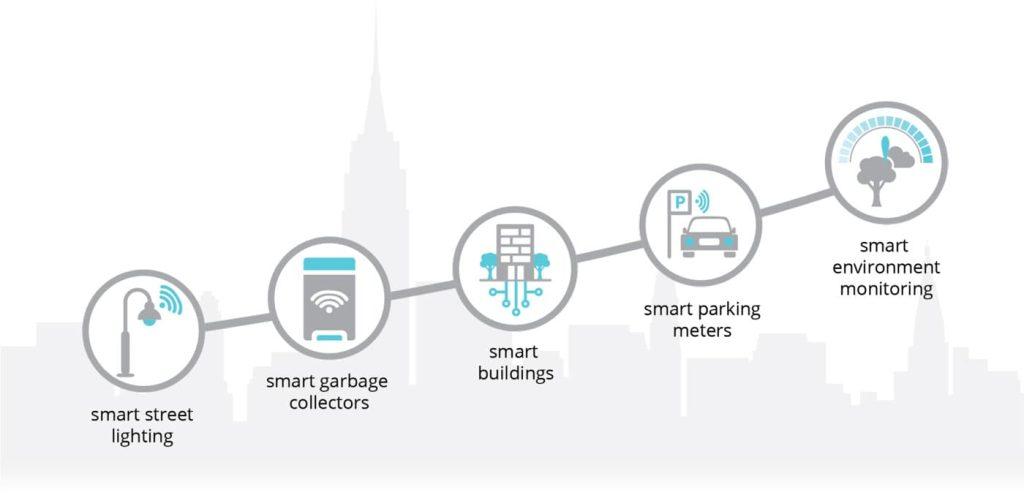07/03/2023• bymarcus

Let’s talk about IoT (the Internet of Things). I am going to assume that if you are reading this you have an understanding of IoT and how connected devices work. What is really interesting is the significant role that connected devices (which forms the Internet of Things) has in enabling Smart Cities.
Smart Cities use many sensors and actuators relying completely on the concept of the Internet of Things (IoT). To maintain sustainability and the real-time deployment of smart cities, secured wireless connectivity and IoT technology are mandatory factors. To achieve this, blockchain is integrated with the IoT in the smart city environment. I will be discussing the merging of blockchain and IoT in Part 3.
Smart City Sensors
Consider now the applications that exist, or could exist, within a smart city. Things like Smart Buildings, Smart Street Lighting, Smart Waste Management, Smart Cars, Smart Parking, Smart Environment Monitoring etc. Each of these applications rely on sensors and actuators to capture information (data) and then convert that data in meaningful insights and ultimately actions. It is easy to see how each of these applications could exist in their own siloed ecosystem such as a Smart Building, or Smart Waste Management system, each ecosystem gathering data in their own silo.

As citizens become increasingly digitized, they are demanding greater transparency from governments and better management of public resources. As a result, models that use highly accurate sensors that interoperate with wireless technologies across ecosystems in real time with minimal maintenance costs and easy deployments are forming the basis of smart cities.
This raises three interesting questions:
- How can all this information be gathered and shared in real time?
- How can greater transparency between citizens and governments be achieved?
- How is citizens privacy assured when using / participating in the smart city services?
Simply put the merging of blockchain and IoT provides a solution that enables the interoperability between IoT ecosystems in a secure and transparent way, where data is recorded as immutable records and activity is recorded using cryptography maintaining the anonymity and privacy of participants in the services.
So how is this data traffic coordinated?
Clearly there are a lot of moving parts to be coordinated. Smart Contracts provide the ‘logic’ that coordinates transactions, data flows and actions within the Smart city Ecosystem. The blockchain provides an environment where IoT ecosystems can interoperate in a secure way and transactions can occur in a transparent and secure manner resulting in immutable records.
In Part 3 of this series, we will take a closer look at how IoT and Blockchain can merge and why this merge is important.
Last modified: 07/03/2023






